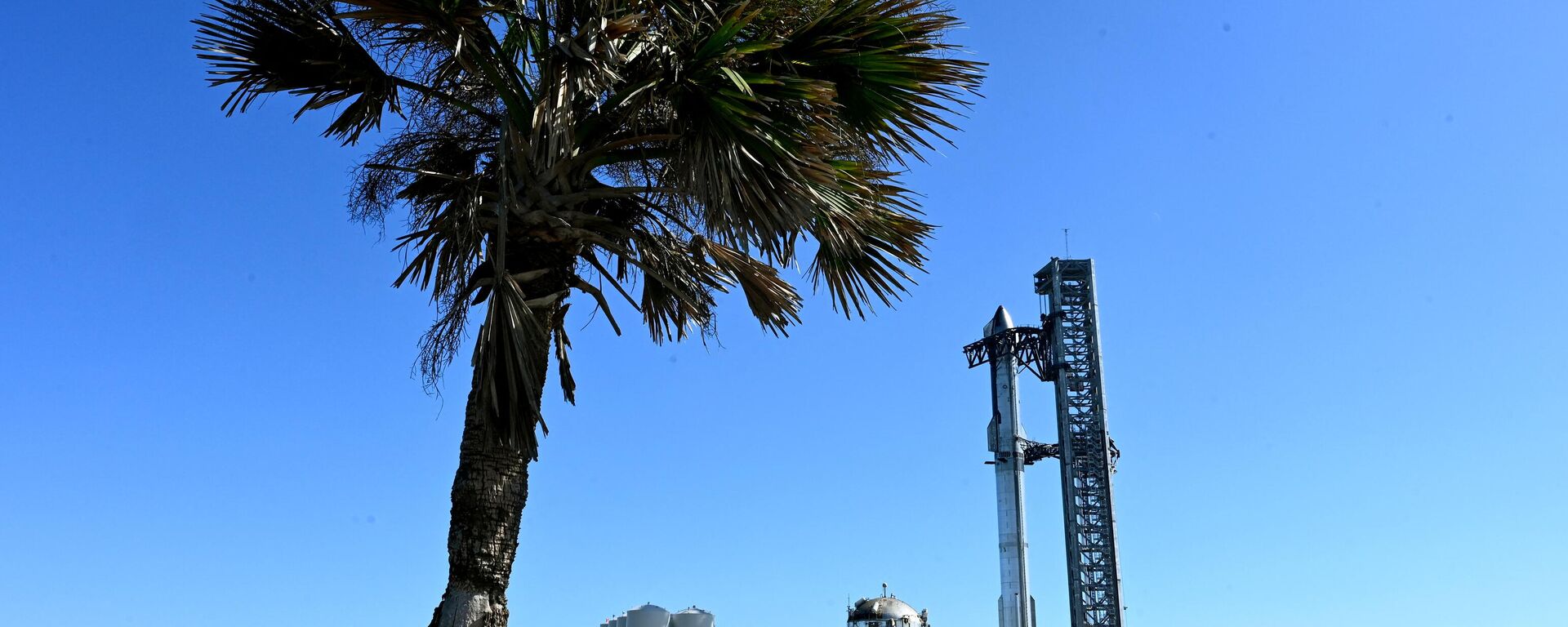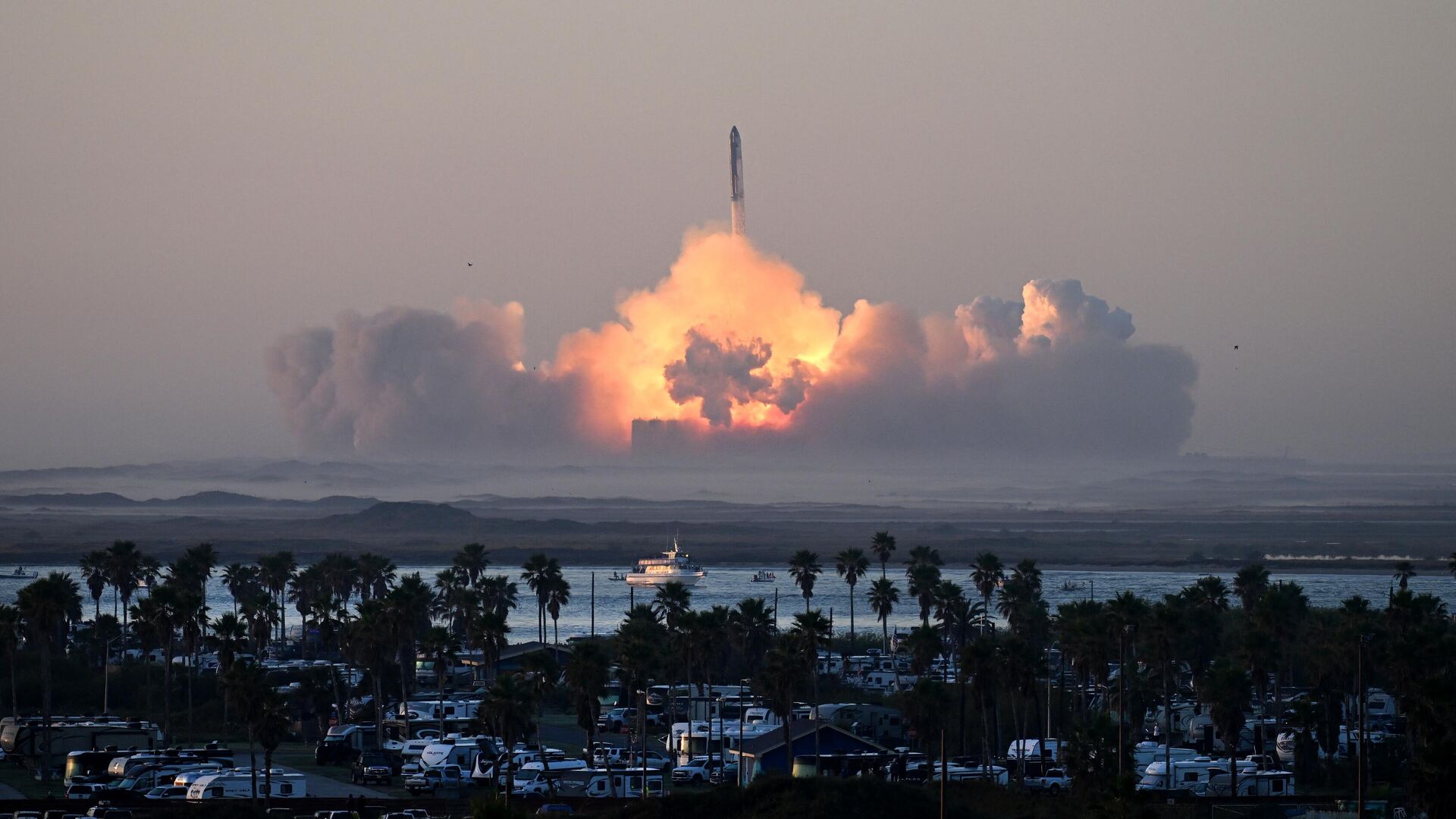https://sputnikglobe.com/20231118/mishap-during-2nd-test-flight-of-spacexs-starship-resulted-in-loss-of-spacecraft---faa-1115049700.html
SpaceX Loses Spacecraft in 2nd Test Flight Due to 'Mishap' - FAA
SpaceX Loses Spacecraft in 2nd Test Flight Due to 'Mishap' - FAA
Sputnik International
A mishap during SpaceX's second test flight of the Starship Super Heavy rocket resulted in the loss of the spacecraft, the Federal Aviation Administration (FAA) told Sputnik on Saturday.
2023-11-18T18:52+0000
2023-11-18T18:52+0000
2023-11-19T07:34+0000
americas
us
spacex
rocket launch
https://cdn1.img.sputnikglobe.com/img/07e7/0b/12/1115049529_0:72:3386:1977_1920x0_80_0_0_77a2daa514616da8289f2c27ee6ce037.jpg
"A mishap occurred during the SpaceX Starship OFT-2 launch from Boca Chica, Texas, on Saturday, November 18," the FAA said. "The anomaly resulted in a loss of the vehicle." No injuries or public property damage have been reported, according to the FAA. The FAA said it will oversee SpaceX's investigation into the mishap to ensure it complies with federal regulations. The Starship spacecraft triggered its automated flight termination system during the second phase of its flight, destroying the vehicle before reaching orbit, according to the SpaceX broadcast. If the Starship spacecraft reached orbit, it would have reentered the Earth's atmosphere later on Saturday and splashed down near the coast of Hawaii. During the first phase of the launch, the Starship spacecraft successfully detached from the Super Heavy Booster rocket using hot-stage separation. The booster rocket, designed to be reusable, should have splashed down in the Gulf of Mexico but exploded shortly after the separation. SpaceX said the Starship successfully lifted off under the power of all 33 Raptor engines on the Super Heavy Booster and made it through the hot-stage separation, but the booster experienced a "rapid unscheduled disassembly" shortly after stage separation. The upgrades to Starship's fully integrated rocket for its second test flight included the hot-stage separation system to improve separation of the spacecraft from the booster rocket, a new electronic Thrust Vector Control system to improve control of the rocket mid-flight, and the installation of a water-cooled steel flame deflector at the launch pad. The first launch of the nearly 400-foot Starship rocket system, the biggest and most powerful rocket ever built, took place on April 20. SpaceX engineers deliberately detonated Starship during the first test flight after it began tumbling and losing altitude when multiple engines failed. The first test flight did not reach the second stage — separation of the Starship spacecraft from the Super Heavy Booster. The Starship is the centerpiece of SpaceX efforts to develop a fully reusable transportation system designed to carry humans to the Moon and on long-duration flights to Mars and beyond. The system is designed for in-space refueling and the ability to land at destinations across the solar system and return to Earth.
https://sputnikglobe.com/20231118/spacexs-starship-super-heavy-rocket-successfully-lifts-off-from-southern-texas-1115045618.html
americas
Sputnik International
feedback@sputniknews.com
+74956456601
MIA „Rossiya Segodnya“
2023
Sputnik International
feedback@sputniknews.com
+74956456601
MIA „Rossiya Segodnya“
News
en_EN
Sputnik International
feedback@sputniknews.com
+74956456601
MIA „Rossiya Segodnya“
Sputnik International
feedback@sputniknews.com
+74956456601
MIA „Rossiya Segodnya“
spacex starship launch, spacex starship launch failure reason
spacex starship launch, spacex starship launch failure reason
SpaceX Loses Spacecraft in 2nd Test Flight Due to 'Mishap' - FAA
18:52 GMT 18.11.2023 (Updated: 07:34 GMT 19.11.2023) WASHINGTON (Sputnik) - A mishap during SpaceX's second test flight of the Starship Super Heavy rocket resulted in the loss of the spacecraft, the Federal Aviation Administration (FAA) told Sputnik on Saturday.
"A mishap occurred during the SpaceX Starship OFT-2 launch from Boca Chica, Texas, on Saturday, November 18," the FAA said. "The anomaly resulted in a loss of the vehicle."
No injuries or public property damage have been reported, according to the FAA.
The FAA said it will oversee SpaceX's investigation into the mishap to ensure it complies with federal regulations.
The Starship spacecraft triggered its automated flight termination system during the second phase of its flight, destroying the vehicle before reaching orbit, according to the SpaceX broadcast.
If the Starship spacecraft reached orbit, it would have reentered the Earth's atmosphere later on Saturday and splashed down near the coast of Hawaii.
During the first phase of the launch, the Starship spacecraft successfully detached from the Super Heavy Booster rocket using hot-stage separation. The booster rocket, designed to be reusable, should have splashed down in the Gulf of Mexico but exploded shortly after the separation.

18 November 2023, 13:27 GMT
SpaceX said the Starship successfully lifted off under the power of all 33 Raptor engines on the Super Heavy Booster and made it through the hot-stage separation, but the booster experienced a "rapid unscheduled disassembly" shortly after stage separation.
The upgrades to Starship's fully integrated rocket for its second test flight included the hot-stage separation system to improve separation of the spacecraft from the booster rocket, a new electronic Thrust Vector Control system to improve control of the rocket mid-flight, and the installation of a water-cooled steel flame deflector at the launch pad.
The first launch of the nearly 400-foot Starship rocket system, the biggest and most powerful rocket ever built, took place on April 20.
SpaceX engineers deliberately detonated Starship during the first test flight after it began tumbling and losing altitude when multiple engines failed. The first test flight did not reach the second stage — separation of the Starship spacecraft from the Super Heavy Booster.
The Starship is the centerpiece of SpaceX efforts to develop a fully reusable transportation system designed to carry humans to the Moon and on long-duration flights to Mars and beyond. The system is designed for in-space refueling and the ability to land at destinations across the solar system and return to Earth.





